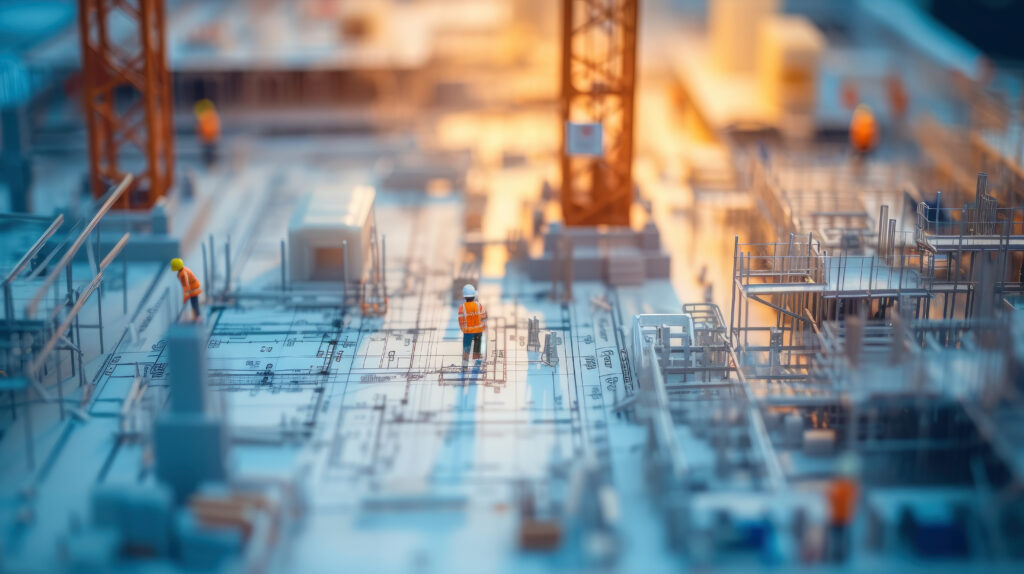Construction is a unique industry in many ways. One of the biggest is that it’s one of the few industries where everyone going into a project expects the price at the end to be more than the price at the beginning.
If the same thing happened when you went to buy a car or ordered something online, you’d be very upset (to say the least), but somehow, in the construction world, we all take it in our stride.
We all know that construction projects are living, breathing things that change, evolve, and grow as they run their course. However, that doesn’t mean you can’t take steps to save time and money on construction projects. Here are some top tips to keep your projects in the black.
Look Behind the Walls and Underground
Often, the highest extra costs on any construction project come from things you can’t see before you start work and that you won’t see when the work is finished.
That’s why one of the best things you can do to save money, whether you’re involved in new construction, additions, renovations, or any other kind of construction project, is to look in those places.
Sometimes, that might mean getting a geotechnical survey done of ground conditions. Or maybe you need to get experts in to assess plumbing or electrical. Maybe you need to check whether lead paint or asbestos on site will need to be abated before new work can start.
Spending the time and money upfront looking at these common sources of hidden costs might mean you have to increase your budget, but at least you’ll know that before your project kicks off.
Hire and Specify Carefully
The next tip to save time and money in construction also comes before anyone lifts a hammer on your construction site.
That is, make sure you specify every aspect of the work as carefully and accurately as possible, and ensure that your contractor selection process is more than just looking at the bottom line.
Incorrect specifications lead to all sorts of problems, from being unable to buy discontinued products to change orders and more. The more time you and your professional team spend getting specifications as polished as possible, the less you’ll pay later trying to fix problems.
Regarding hiring, good contractors tend to cost a little more than not-so-great ones, but they tend to be much more professional, and they usually have the capacity to do the jobs they win when bidding. Lower-cost contractors typically make their money on volume, so they’re always overbooked, which means they might not be on your job site when you need them there.
Plan, Plan, and Plan Some More
One of the hardest things about construction project management is the amount of planning and preconstruction work that needs to go into every project. But that’s still less work than fixing things when they go wrong.
Every construction project should be assessed and planned from every angle, from creating accurate project schedules and keeping them up to date to risk and hazard assessments, contingency planning, permitting and quality assurance plans, testing schedules, and more.
Most construction project management teams are the busiest before a project starts and when it’s winding down, but the better prepared you are and the more work you put into planning, the easier the parts in between will be.
Be Ready to Make Changes
There’s a reason why no construction projects ever come in at the price specified or the deadline initially agreed. Things change along the way, and those changes have cost and time implications.
Change orders or even changing contractors when things aren’t working out are a fact of life in construction, so while you need to plan everything meticulously before you start, you also have to be prepared to make changes as necessary. The faster your team can recognize problems and change their plans to create solutions, the closer your project is likely to be to time and cost targets.
Always be open to innovative solutions when they’re proposed, and try to look at changes as just another part of the process.
Stay Involved
There’s a reason why we have so many people on the project team for any large construction project. They’re all needed to track, monitor and report on different aspects of the work.
Architects review and recommend design changes that are necessary for the work. Engineers inspect work, revise design calculations, and ensure work meets required standards. Health and safety officers ensure that regulatory requirements are met on the job site.
Construction has never been and will never be a “set it and forget it” industry, and the projects that do meet their targets tend to be the ones where everyone is engaged and involved from start to finish.
Getting the Right Kind of Help
Of course, as a client, or owner’s representative, you probably have many different construction projects in progress at any given time.
Hiring an excellent team for each project is a great start in implementing these five tips, but even the best teams need some oversight too.
That’s why we built Owner Insite. So that owners and their representatives have an easy-to-access, easy-to-review bird’s eye view of every construction project when needed.
You might not have time to do a deep dive into every report, submittal, or non-conformance report that comes from every site, but when you can see critical project data at a glance, it’s easy to spot potential problems before they get out of control.
Owner Insite is a platform that gives you the most critical project information you need first so you always know when to get more involved. Book a free demo with our team, and let us show you how Owner Insite can help you to save time and money on every project.




